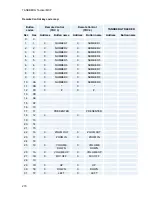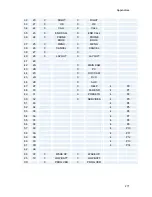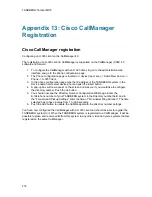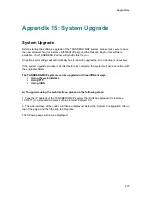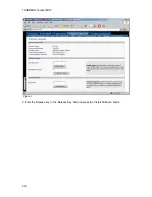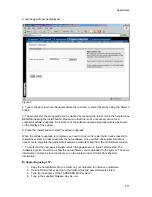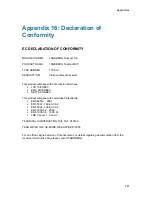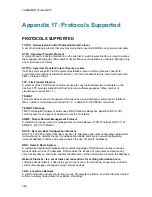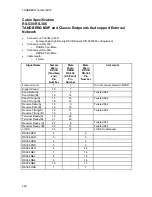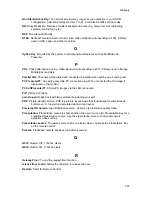
TANDBERG Tactical MXP
282
Appendix 17: Protocols Supported
PROTOCOLS SUPPORTED
TCP/IP - Transmission Control Protocol/Internet Protocol
A set of networking protocols that provides connectivity over LAN/WAN to any network computer.
HTTP - Hypertext Transfer Protocol
A protocol used to transfer information on the internet. A web-browser interface is used to access
the management computer. (Max number of simultaneous connections is unlimited, although only
one is processed at a time).
HTTPS - Hypertext Transfer Protocol Secure sockets
If a Web server supports the SSL protocol (establish a secure communications channel to
prevent the interception of critical information), the Internet address for the server will begin with
https:// instead of http://
FTP - File Transfer Protocol
A member of the TCP/IP suite of protocols used to copy files between two computers on the
Internet. FTP provides standard method for remote software upgrades. (Max. number of
simultaneous connection = 1).
TELNET
Telnet provides access to management functions by using a standard command-line interface.
(Max. number of simultaneous connection = 8, in addition to the RS232 connection).
TELNET Challenge
TMS (Tandberg Management Suite) uses MD5-Challenge Response algorithm (RFC-1321)
Telnet access for encryption of password over the IP network.
SNMP - Simple Network Management Protocol
A standard network protocol for management and surveillance of TCP/IP networks (RFC 1157
SNMP v1, RFC 1213 MIB-II).
DHCP - Dynamic Host Configuration Protocol
DHCP is a TCP/IP protocol that offers dynamic IP addresses and other configuration parameters
(subnet mask) to network clients. It provides safe reliable and simple network configuration,
prevents address conflicts, and helps conserve the use of client IP addresses.
DNS - Domain Name System
A hierarchical distributed database that contains mappings of DNS domain names to various
types of data, such as IP addresses. DNS enables the location of computers and services by
user-friendly names, and it also enables the discovery of other information stored in the database.
Network Protocol – Is a set of rules and conventions for sending information over a
communications network. These rules govern the content, format, timing, sequencing, and error
control of messages exchanged among network devices.
LAN – Local Area Network
A communications network connecting a group of computers, printers, and other devices located
within a relatively limited area (for example, a building).
Summary of Contents for TacticalMXP
Page 14: ......
Page 192: ...TANDBERG Tactical MXP 178 Voice Switched mode...
Page 246: ...TANDBERG Tactical MXP 232 Fuse 2A 250V Slow 5 x 20mm Littelfuse type 215002...
Page 250: ...TANDBERG Tactical MXP 236...
Page 275: ...Appendices 261...
Page 279: ...Appendices 265 Top view...
Page 282: ...TANDBERG Tactical MXP 268...



